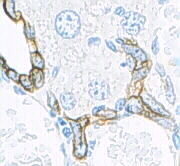

- #Translucent cells containing keratin called skin
- #Translucent cells containing keratin called series
This is why they show high lysosomes enzymes concentration. These cells are arranged in two to four layers, and they begin to degenerate. These layer cells contain granules filled with keratohyalin that is needed for keratin production. layer named for the numerous granules present. They lack a nucleus and the cytoplasm is filled with a gelatinous substance, eleidin, which will transform into keratin.ī. Keratinocytes are diaphanous and are grouped together. This layer is so thin that the cells´ edges and some ties their nucleus can not be identified.
#Translucent cells containing keratin called skin
layer of translucent cells in thick skin containing dead keratinocytesĪlso known as the transparent layer, is only located in the thicker parts of the skin, such as the hands´ palms and the feets´ soles.
#Translucent cells containing keratin called series
This suggests that they originated from a series of gene duplications on these chromosomes. The human genome encodes 54 functional keratin genes, located in two clusters on chromosomes 12 and 17. The acidic keratins are encoded on chromosome 17 (17q21.2). The neutral–basic keratins are encoded on chromosome 12 (12q13.13). ( October 2022) ( Learn how and when to remove this template message) Please help improve this section if you can.

Using the source a bit more to explain what each zone of numbers mean will be helpful, as we currently have no particular examples of a hair keratin. The specific problem is: Not particularly helpful to dump a big list of KRT+numbers here. This section may require cleanup to meet Wikipedia's quality standards. Nematodes and many other non-chordate animals seem to have only type VI intermediate filaments, fibers that structure the nucleus. Keratins (also described as cytokeratins) are polymers of type I and type II intermediate filaments that have been found only in chordates ( vertebrates, amphioxus, urochordates). The new term corneous beta protein (CBP) has been proposed to avoid confusion with α-keratins. Recent scholarship has shown that sauropsid β-keratins are fundamentally different from α-keratins at a genetic and structural level. However, beta sheets are also found in α-keratins. These keratins are formed primarily in beta sheets. They are found in the nails, scales, and claws of reptiles, in some reptile shells ( testudines, such as tortoise, turtle, terrapin), and in the feathers, beaks, and claws of birds. The harder beta-keratins (β-keratins) are found only in the sauropsids, that is all living reptiles and birds. These antibodies are used as fluorescent markers to distinguish subsets of mouse thymic epithelial cells in genetic studies of the thymus. For example, mouse thymic epithelial cells react with antibodies for keratin 5, keratin 8, and keratin 14.

They are also present in epithelial cells in general. Keratin filaments are abundant in keratinocytes in the hornified layer of the epidermis these are proteins which have undergone keratinization. The baleen plates of filter-feeding whales are also made of keratin. They form the hair (including wool), the outer layer of skin, horns, nails, claws and hooves of mammals, and the slime threads of hagfish. Spider silk is classified as keratin, although production of the protein may have evolved independently of the process in vertebrates.Įxamples of occurrence The horns of the impala are made of keratin covering a core of bone.Īlpha-keratins (α-keratins) are found in all vertebrates. Keratin comes in two types, the primitive, softer forms found in all vertebrates and harder, derived forms found only among sauropsids (reptiles and birds). The only other biological matter known to approximate the toughness of keratinized tissue is chitin. Excessive keratinization participate in fortification of certain tissues such as in horns of cattle and rhinos, and armadillos' osteoderm. Keratin monomers assemble into bundles to form intermediate filaments, which are tough and form strong unmineralized epidermal appendages found in reptiles, birds, amphibians, and mammals. Keratin is extremely insoluble in water and organic solvents. Keratin also protects epithelial cells from damage or stress. It is the key structural material making up scales, hair, nails, feathers, horns, claws, hooves, and the outer layer of skin among vertebrates. Alpha-keratin (α-keratin) is a type of keratin found in vertebrates. Keratin ( / ˈ k ɛr ə t ɪ n/ ) is one of a family of structural fibrous proteins also known as scleroproteins. Microscopy of keratin filaments inside cells Not to be confused with Carotene or Creatine.


 0 kommentar(er)
0 kommentar(er)
